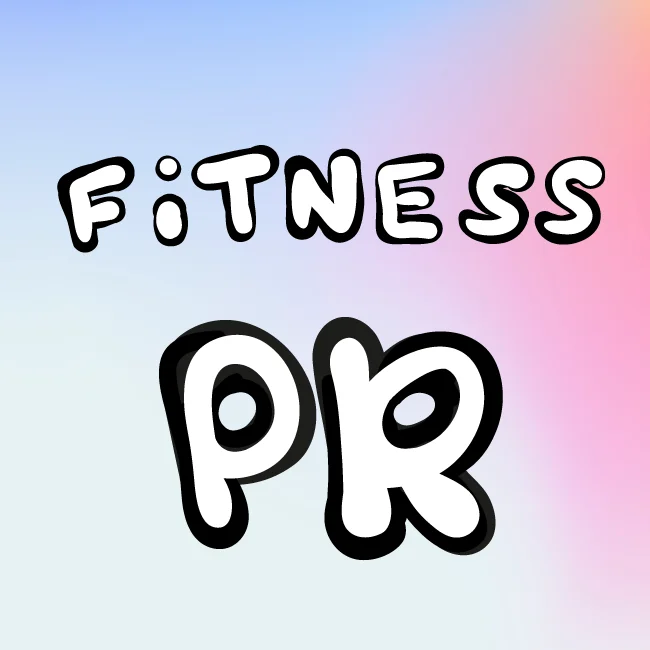Jesse Browne • May 15, 2025
PR Advice on Fitness Trends: The Complete Fitness and Wellness Cycle

Author: Jesse Browne
Jesse is studying Public Relations and Advertising, with a background in media relations, integrated marketing communication and crisis management. At PR ON THE GO he's engaging and developing strategies in the creative advertising and fitness space, while leveraging his research skills and a data-driven approach to create and deliver impactful results across other diverse industries.
Working out has become the first part of a much broader routine, the second part is recovery, and both steps need to be given equal attention.
I asked our PR and growth experts to advise fitness business owners on how to incorporate a complete fitness and wellness cycle into their programs.
Here is what our experts had to say.
- Position yourself as an expert on restoration and recovery
- Bundle offers with recovery tools & techniques
- Share recovery wins like improved sleep, consistent stretching or better stress management
- The full loop: effort, recovery, and resilience
- Recovery-based techniques as a value add within fitness
- Design a signature recovery protocol unique to your business
- Sell recovery through success stories of proper pacing habits and energy rebounds
- Teach clients how recovery completes the cycle of transformation
- Recovery is where the real transformation happens
Position yourself as an expert on restoration and recovery
Emily Reynolds-Bergh, Owner at R Public Relations
"With so many people working from home and the increasingly blurred lined between the personal and the professional, millions of people would benefit from guidance on restoration and recovery.
Consider developing an educational social media series, writing blogs on the subject, or even offering yourself as an expert interviewee on the topic. Publications are looking for people to speak on rest, so positioning yourself as a thought leader in the field could really pay off."
Bundle offers with recovery tools & techniques
Jasmine Charbonier, Content Marketing Strategist
"Based on what's worked best with my clients, here's what needs to be part of your complete cycle: Movement screening & mobility work before intense training. Smart programming that alternates intensity. Immediate post-workout nutrition & cool-down protocols. And — this is crucial — recovery tools & techniques members can use between sessions.
I've found the most success helping gyms bundle these services into tiered membership packages. The basic tier includes group classes & general recovery guidance. Mid-tier adds recovery tool access & basic movement screening. Premium includes 1-on-1 mobility work & unlimited recovery services.
From my PR experience, the messaging needs to focus on results & feelings, not just features. Instead of "we have compression boots," say "recover faster & feel ready for your next session." Share success stories showing how the complete cycle transformed members' fitness. Use before/after comparisons highlighting improved recovery times & reduced soreness. The key is demonstrating the practical benefits of this comprehensive approach."
Share recovery wins like improved sleep, consistent stretching or better stress management
Annika Kariniemi, Founder atActiv 8 Health
"As a Registered Nurse and certified weight loss expert, I understand how powerful a well-rounded approach to fitness can be. For years, the focus was all about pushing through workouts — more reps, more sweat, more effort. But that’s only half the story. Recovery is just as important — it's where the body actually changes, heals, and gets stronger. So if you're a fitness business owner, this is your opportunity to build a truly transformative experience for your clients.
The first step is helping your clients understand that recovery is not downtime or slacking — it’s a vital part of the training process. Muscles grow, hormones reset, and inflammation decreases during recovery. Make this a part of your brand message.
Clients are used to celebrating weight loss or strength PRs — but what about non-scale victories like improved sleep, consistent stretching, or managing stress better? Track and highlight these milestones in your program.
Share tips in newsletters, classes, or even short recovery “facts” on social media. The more clients understand the why, the more they’ll respect the process."
The full loop: effort, recovery, and resilience
Samuel Huang, CEO at Telegram Ads Agency
"If you’re a fitness brand in 2025 and you’re still only selling the “grind” part of the fitness cycle, you’re leaving loyalty on the table. Today’s audience — especially millennials and Gen Z — see wellness as a full loop: effort, recovery, and resilience.
From a PR and growth standpoint, the best move is to elevate recovery as a feature, not an afterthought. Position things like guided cooldowns, sleep support, breathwork, or nutrition tips as part of the training experience — not optional extras.
We’ve seen campaigns perform best when they show the complete lifestyle — someone crushing a lift and journaling afterward, or foam rolling between client calls. Fitness isn’t just physical now; it’s identity. Brands that speak to both effort and restoration build deeper, longer-term connections."
Get the PR ON THE GO Global Fitness Media List: Pitch your brand to 500+ fitness journalists
Recovery-based techniques as a value add within fitness
Deepak Shukla, CEO at Pearl Lemon PR
"When it comes to fitness, one trend we have noticed is the wider appeal of not just the workout, but also recovery. Clients are wanting a complete fitness and wellness cycle that gives equal recognition to performance and recovery.
The concept behind this is simply that fitness is more than what happens in the hour or so that you work out. The major differentiator is how well you recover afterward. As recovery is a widely recognized factor, we are seeing more fitness businesses develop recovery-based techniques into their regimes, as recovery techniques, nutrition tips, and mindfulness activities are used to adapt their workout programming. Recovery as a value add within fitness is finally gaining credence, and the fitness businesses maximising this trend are gaining better results for their clients, as well as better client retention levels.
Fitness businesses must position themselves to promote more than simply a workout. Clients are looking for a way to maximize their physical long-term wellness and looking for a balanced approach that includes recovery. Health isn't just the absence of disease; it means whole well-being, not just the fitness "fix." Clients want a comprehensive health experience that supports them and makes them feel whole and healthy. Providing services or information that supports them in this way, whether that is ensuring they have the proper sleep foundational to fitness, nutrition advice, or just proper recovery post intense sessions, can assist you in connecting more fully to your audience."
Design a signature recovery protocol unique to your business
Vaibhav Kakkar, CEO at Digital Web Solutions
"To stand out in a competitive market design a signature recovery protocol that is unique to your business. It could include foam rolling, post class smoothies, meditation or even access to sleep tracking tools. When recovery is built into the journey clients do not have to guess what is next they just follow your lead.
From a growth angle this turns your offering into a complete experience which increases perceived value. Package it, name it and make it part of your brand language. You are not just selling workouts rather you are selling transformation."
Sell recovery through success stories of proper pacing habits and energy rebounds
Jason Hennessey, CEO at Hennessey Digital
"The best way to sell recovery is through stories. Highlight members who overcame injury through proper pacing habits. Show testimonials about sleep changes and energy rebounds weekly. Let your community share recovery wins, not just weight lost. Make rest a moment of pride, not quiet shame. You’re not just curating bodies, but building self-respect.
We advised a client to film “recovery success reels.” These clips celebrated small breakthroughs and slow progress visibly. It helped reframe what fitness meant emotionally to viewers. People said it felt more inclusive and sustainable instantly. That shift deepened brand trust more than any results page. You grow when your audience feels safe evolving slowly."
Teach clients how recovery completes the cycle of transformation
Timothy Burgin, Founder & Executive Director at Yoga Basics
"Most fitness programs ignore what the body needs after training. They push harder, faster, and more. That’s not growth. That’s depletion.
If you run a fitness business, you need to teach clients how recovery completes the cycle of transformation. Without it, stress builds, injuries increase, and progress stalls. Recovery isn’t passive. It’s movement, awareness, and recalibration. This is where yoga becomes essential; not as a side offering, but as a foundation.
Offer simple breathwork sessions to regulate the nervous system post-training. Teach clients how to shift from high-output states into rest and repair through long exhalations and stillness. Add yin and restorative classes during off days to maintain mobility and nourish connective tissue. Introduce yoga nidra to support deep rest and reset mental fatigue.
Help clients build rituals, not habits. A cool-down isn’t recovery. A recovery practice involves attention, breath, and presence. It teaches the body how to absorb stress, rather than accumulate it. That leads to adaptation, resilience, and longevity.
Most people train their muscles. Few train their awareness. Recovery practices develop both. The result is better form, fewer injuries, and stronger commitment. You’ll feel it in the energy of your space and in the retention of your members.
If you’re not teaching recovery, you’re only offering half the practice."
Recovery is where the real transformation happens
Mimi Nguyen, Founder at Cafely
"Fitness without recovery is a fast track to burnout, and I would know as someone on this long journey with PCOS and weight loss. I used to push myself through HIIT five days a week thinking that more effort meant faster results, but spoiler: it didn’t. My cortisol spiked, I plateaued and I felt awful. It wasn’t until I started treating recovery like mobility work, breathwork, sleep hygiene, and proper fueling with the same respect as my workouts that things shifted.
If you’re running a fitness business, it’d be best to build programs that reflect the whole cycle. Working out is just the ignition, recovery is where the real transformation happens. A great program could include proper steps on active recovery days, nutritional education, hydration, and even stress management. You could also offer yoga, Pilates, or guided stretching as part of the membership, not just optional add-ons.
Recovery isn’t just for elite athletes either, so stop treating it as such and market it towards real, “ordinary” people. I’m talking about busy moms, office desk workers or beginners who are sore and feeling overwhelmed.
And if you’re running social media campaigns, talk about this cycle a lot through showing your trainers foam rolling, drinking electrolyte water, or taking walks. Be real. Authenticity builds trust and trust brings in loyal clients, so be real with them and they’ll reward you for it."
#PRontheGO
Subscribe to the PR ON THE GO newsletter.
Receive the latest media news in your inbox. Discover journalists and start pitching!
